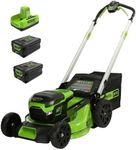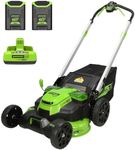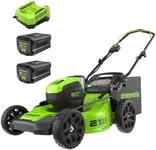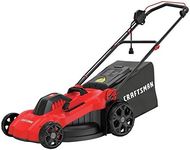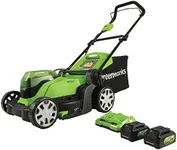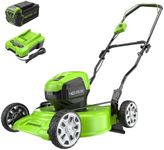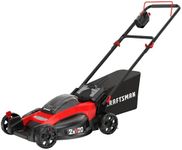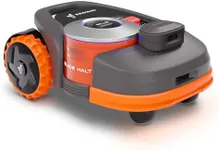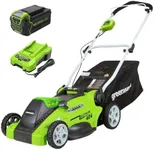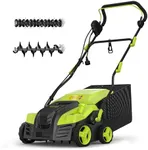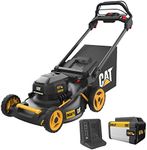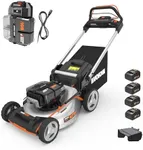Buying Guide for the Best Cheap Lawn Mowers
Choosing the right lawn mower can make a big difference in maintaining your lawn efficiently and effectively. When selecting a lawn mower, it's important to consider various factors that will impact its performance and suitability for your specific needs. Here are some key specifications to consider and how to navigate them to find the best fit for you.Type of Lawn MowerLawn mowers come in different types, including push mowers, self-propelled mowers, and riding mowers. Push mowers require manual effort to move, making them suitable for small, flat lawns. Self-propelled mowers have a motor that drives the wheels, reducing the effort needed to mow larger or uneven lawns. Riding mowers are ideal for very large lawns, as you can sit and drive them like a small tractor. Choose the type based on the size and terrain of your lawn.
Cutting WidthThe cutting width refers to the width of the mower's blade and determines how much grass is cut in a single pass. A wider cutting width means fewer passes are needed to mow the lawn, which can save time. For small lawns, a cutting width of 14-18 inches is usually sufficient. Medium-sized lawns may benefit from a width of 18-22 inches, while large lawns may require 22 inches or more. Consider the size of your lawn to determine the appropriate cutting width.
Power SourceLawn mowers can be powered by gas, electricity, or batteries. Gas mowers are powerful and suitable for large lawns but require more maintenance and produce emissions. Electric mowers are quieter and more environmentally friendly, but they may be limited by the length of the power cord. Battery-powered mowers offer the convenience of cordless operation but may have limited run time. Choose the power source based on your lawn size, environmental concerns, and convenience preferences.
Cutting Height AdjustmentCutting height adjustment allows you to change the height at which the mower cuts the grass. This is important for maintaining a healthy lawn, as different grass types and seasons may require different cutting heights. Look for mowers with easy-to-use height adjustment mechanisms, typically ranging from 1 to 4 inches. Consider the types of grass in your lawn and the seasonal variations to determine the necessary range of cutting heights.
Grass Clipping ManagementGrass clipping management refers to how the mower handles the grass clippings. Options include bagging, mulching, and side discharge. Bagging collects clippings in a bag for easy disposal, mulching finely chops the clippings and returns them to the lawn as natural fertilizer, and side discharge ejects clippings out the side of the mower. Choose the method based on your preference for lawn maintenance and the condition of your lawn.
Ease of UseEase of use encompasses features that make the mower more user-friendly, such as ergonomic handles, easy-start mechanisms, and lightweight design. These features can reduce fatigue and make mowing more enjoyable. Consider your physical capabilities and how often you mow your lawn to determine which ease-of-use features are most important for you.
Durability and Build QualityDurability and build quality refer to the materials and construction of the mower. A well-built mower will last longer and perform better over time. Look for mowers with sturdy frames, high-quality blades, and reliable engines. Consider the frequency of use and the conditions in which you will be mowing to determine the level of durability you need.
